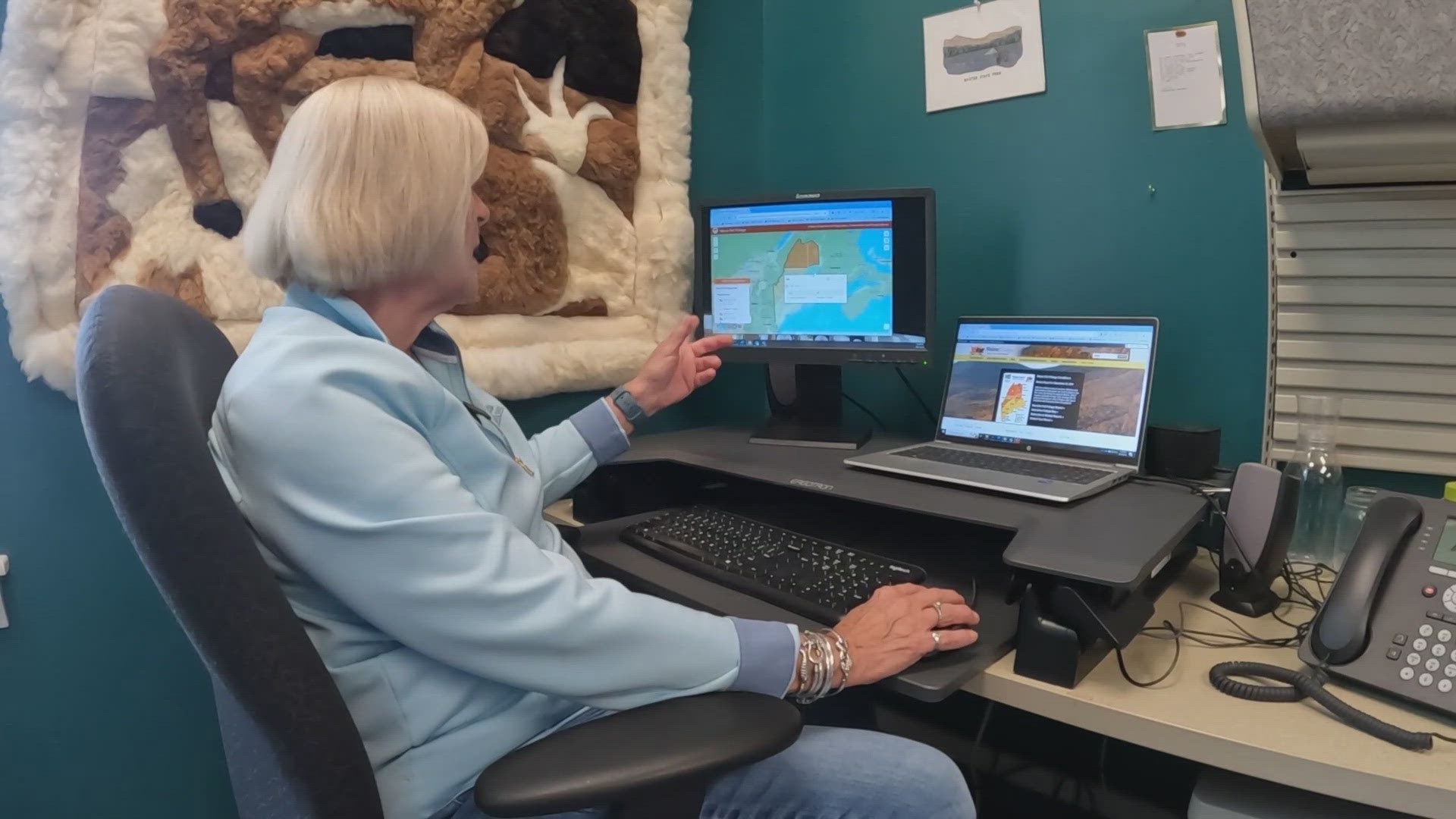AUGUSTA, Maine — Sometimes, it’s best to clear your mind and take stock.
Maine has 17,000,000 acres of forest in which to do that. Fall is upon us and, on a comfortable early October day, Patty Cormier invited us to take a walk in the woods.
Cormier is Maine's state forester and director of the Maine Forest Service. In Augusta, she led us along a short trail which ended in an overlook above the State House. The Kingfield native took in her home state's annual technicolor evolution mid-leaf-change. In central Maine—though our Aroostook County brethren would scoff at the thought of Augusta as being "central"—pops of yellow and orange stood out among a sea of green. In the aforementioned northernmost county and the western mountains, however, the woods were already ablaze.
"Someone could follow the foliage from dry [in] the north, and kind of follow it as it progresses through the seasons," Cormier motioned.
She described the foliage process as "cues and hues." Shorter, colder days cue the trees to start conserving energy and begin shutting down.
"It’s risk assessment, saying, 'OK, how long do I keep photosynthesizing?' as opposed to, 'When’s that frost coming?'" she explained. "So, every tree is, kind of, this little chemical factory."
No photosynthesis, and the leaves dry out. In a wondrous final act, the dying leaves produce vibrant shades of color before falling to the ground.
Leaf peeping is big business. Visitors spent $1.9 billion in Maine just in the fall of 2023.
Tourists and locals alike want to know when and where to find the prettiest leaves. That’s where Gale Ross comes in. Since 2003, she has officially been Maine’s fall foliage spokesperson. Unofficially, her colleagues call her the “leaf lady.”
"I do speak for the leaves," she smiled, sitting at a desk in the Augusta headquarters of the state's Department of Agriculture, Conservation & Forestry.
The job is exciting but lasts only two months. What does the self-identified retiree do when winter hits?
"I'd be remiss if I didn't tell you, I fly south for the winter," Ross laughed.
Our foliage expert is a snowbird. Though, she was quick to point out someone would need to drag her away from Maine the rest of the year.
In the fall, forest rangers and other state workers scour the woods and rate the tree color and leaf shedding. They send their findings to Ross, who posts the official Maine foliage report each Wednesday.
Through social media accounts and newsletters, the report reaches tens of thousands of eager people each week. The report's Instagram account alone boasted nearly 21,000 followers as of this writing. And Ross fields questions from all corners of Earth including, she said, a family recently planning a trip to Maine from India.
So then, with the foliage beginning to peak in the top half of the state, what did the expert predict in the weeks to come?
"This past summer, we’ve had a dry, warm summer, but just the right amount of rain," Ross said. "So, I think that this is gonna be a banner year. I mean, it’s already shaping up to be a banner year."
That is promising.
Looking forward, though, the science is changing. The trees are responding to climate change.
"What we’re seeing is, with change in temperatures, we’re seeing at least two weeks later for foliage," Cormier explained. "We’re not getting those cold, cold temperatures; we’re not getting freezing nights in the winter. So, it’s just—it’s really confusing trees a little bit."
And, Cormier said, tree species are replanting in new areas, moving to keep up with their normal climate. Add in invasive plant species, she pointed out during our walk, insect infestations like Hemlock woolly adelgid, and sicknesses like Beech leaf disease, and Maine forests, overall, will look different down the road.
Meanwhile, with each report, the end also nears: when Gale Ross colors each zone purple, signifying that each of the state's seven foliage zones are "past peak."
But the season’s brevity is what makes it special. And right now, the colors are back.

